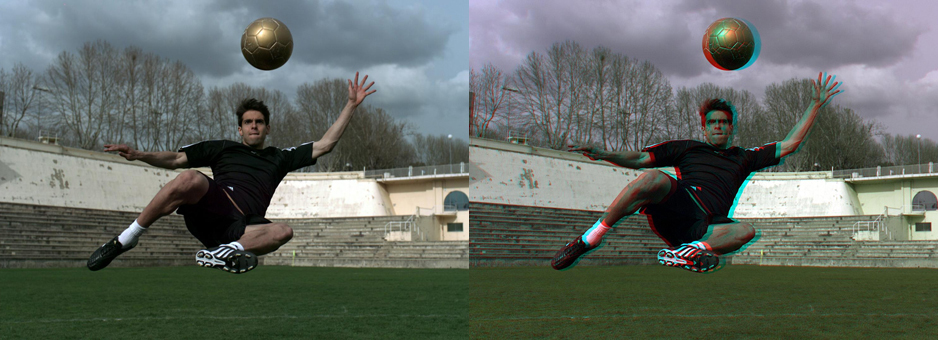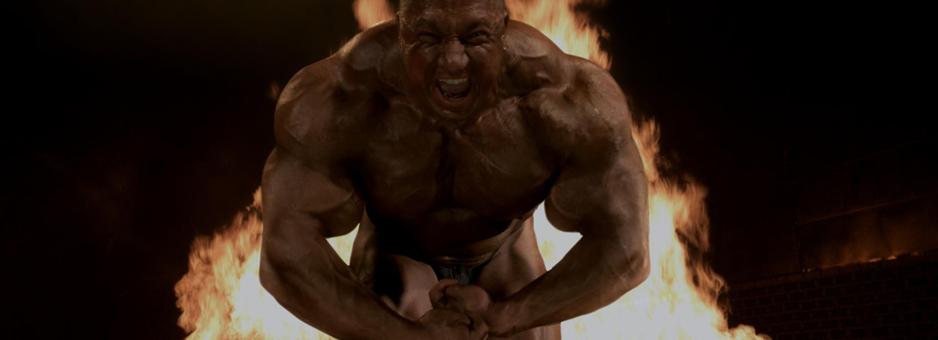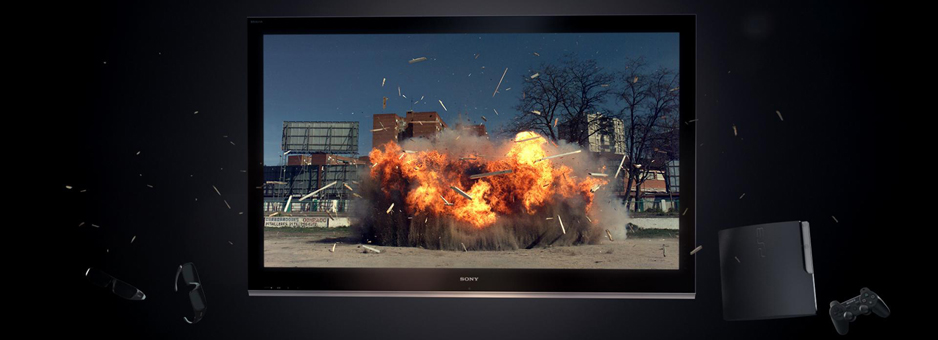London's One of Us Uses Baselight to Take Advertising into a New Dimension
With 3D television sets beginning to appear on the global market, electronics manufacturers are rolling out multifaceted marketing campaigns to stir consumer interest in the new medium. One of the first and most impressive efforts is being undertaken by Sony in support of its newly introduced line-up of 3D Bravia TVs.
The centrepiece of the Sony campaign is a 60-second advert featuring Brazilian footballer Kaká with stereoscopic 3D versions screening in cinemas (alongside 3D summer blockbusters such as Toy Story 3) and on nascent 3D television channels, as well as a cheekily modified 2D version airing on conventional TV channels for the benefit of consumers who aren't yet watching programming through 3D glasses.
The ad, which shows Kaká practicing his dazzling ball skills before unleashing a kick that literally causes a goal to explode, was dreamed up by London agency Anomaly and lensed by veteran director Jonathan Glazer. Final post work was completed at One of Us, London, which integrated the many clever visual effects elements and performed a spectacular final grade via a Baselight system equipped for stereoscopic 3D.
"The script is far ranging and involves all sorts of set pieces," observes One of Us' Tom Debenham, who served as visual effects supervisor. "There's Kaká doing tricks with balls, a yellow Lamborghini doing spins and spewing smoke, a bodybuilder pumping his muscles—the point being to show how the excitement and spectacle of football is multiplied when you see it in 3D. It's a pretty thrilling ride."
The ad was shot in Madrid (where Kaká plays football for Real Madrid), primarily using practical locations. Some four stereo camera rigs were used to record the action, including one equipped with digital cameras capable of shooting 1000 frames per second. Dailies were processed on the set with compressed versions of the media files supplied to the offline editor (The Quarry's Paul Watts), while the original source media was provided to One of Us.
In preparation for final post work, One of Us set up a temporary grading theatre in a shooting stage at its facility with a Baselight HD system supported by a 3D video monitor, a stereoscopic projector (projecting to a 5-metre screen), and a conventional 2D monitor, all calibrated using FilmLight's Truelight technology. Teams of 2D and 3D artists, tasked with preparing visual effects elements, were established in the same space, with their systems, along with Baselight, connected to a central server. Thus, everyone working on the project shared direct access to the source files and all had the ability to view work on the same monitoring systems.
Freelance colourist Adam Inglis performed final grading for both the 3D and 2D versions of the ad. Debenham also used Baselight, in his case, as a compositing tool to assemble visual effects, and, in tandem with 3D specialist and long-time collaborator Chris Panton, to fine-tune the 3D convergence.
It was an unusual set up, but for this project, it proved ideal. "We pulled it all together very quickly and, as it happened just a few weeks after we moved into our new premises, it was a little hectic, but it worked out incredibly well," recalls Debenham. "It was great to have everything in one place. The Baselight HD was fantastic. It basically took the place of a Flame in an ordinary commercials workflow."
The biggest advantage of this workflow was that it allowed all of the artists involved in the project to collaborate in an organic and completely interactive manner. Adjustments to the grade, edit or visual effects could be applied without re-rendering or slowing down the process. That proved crucial as changes continued to be made to the ad virtually up to the point of delivery.
"Everything was kept live up until the end, which was a great way of working for everyone," notes Debenham. "The effects artists working on ungraded effects could feed them into Baselight and we could reapply the grade as we went. Our aim was to keep everything as flexible as possible—especially with the knowledge that there were TV and cinema versions that required different grades."
For Inglis, the project was both his first experience in grading stereoscopic media and his first experience in grading a commercial (he has an extensive background in grading features and television). However, he is a long-time user of Baselight and that helped him adapt to the new medium. "It was an exercise in keeping organized," he explains. "You had not just one layer with all your shapes and decisions, there were two and you had to be sure it all transferred to the other layer where things are slightly different. But once you had that, it was surprisingly simple."
Inglis did have to prepare separate grades for the two 3D versions of the ad to allow for the effect of 3D glasses (with that effect slightly different for 3D cinema and television). "The glasses make everything darker; they give everything a green cast and take the saturation out," Inglis says. "On the first pass, we made it brighter, took some of the green out, and put some colour and contrast in—and then made specific adjustments from that point."
Although the visuals in the ad are almost gleefully over the top, the grade is thoroughly grounded in reality. That's purposeful, Inglis notes, and meant to suggest to viewers something about the experience of 3D. "It's meant to show how realistic 3D is," he says. "Jonathan didn't want to push it into a different look. He wanted it to have breathing room and look natural. The 3D is the look."
If its goal was to stir interest in 3D television, the ad has been an undeniable success. It has generated considerable press attention and the 2D version (where two images are layered as if it were a 3D image viewed without glasses) has become a viral hit on the internet.
Debenham sums up the process of creating the spot as "hard work but worth every minute." In reference to the results, he says, "The ad delivers a visceral and intense experience that portrays the medium in an exciting way."







